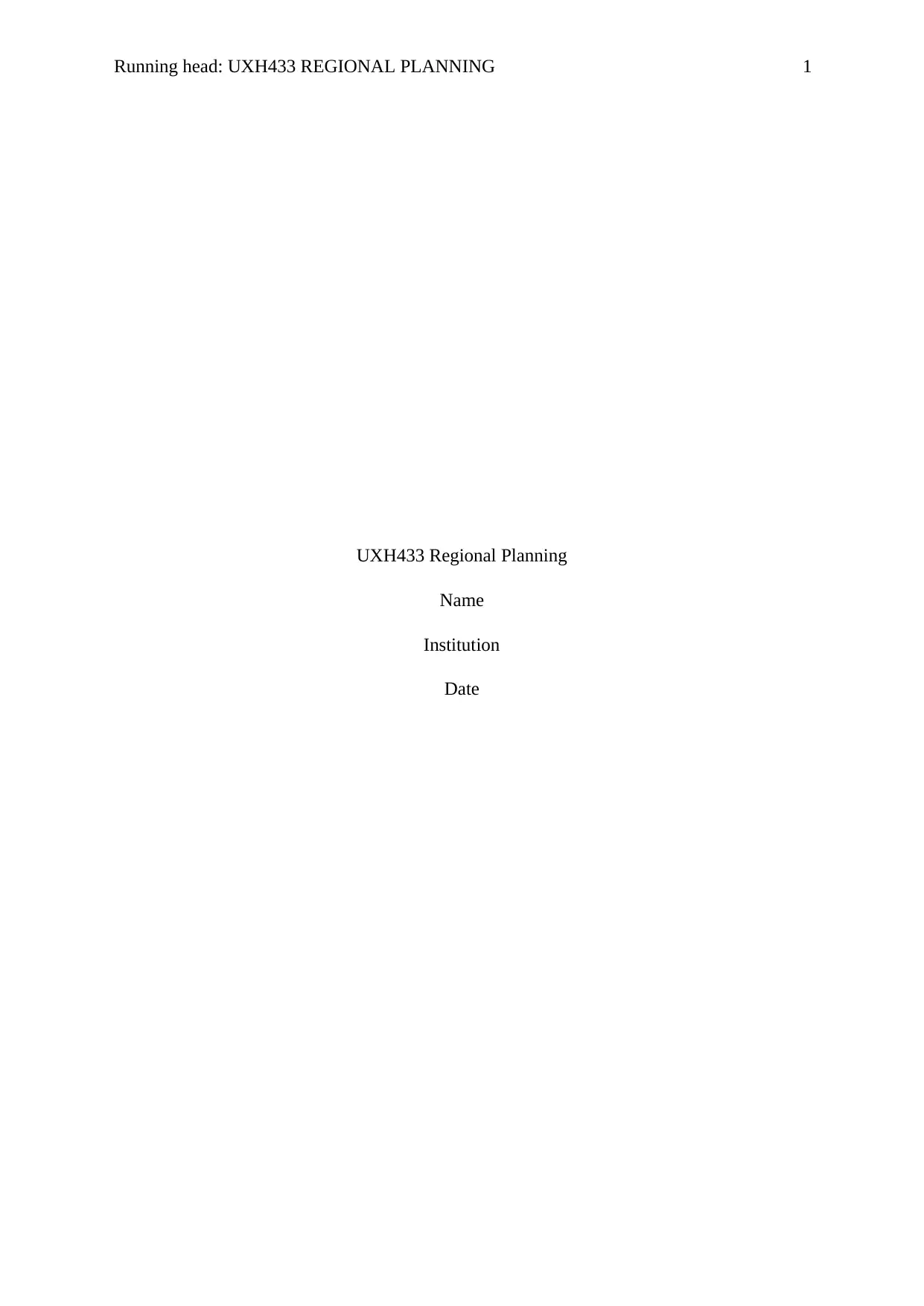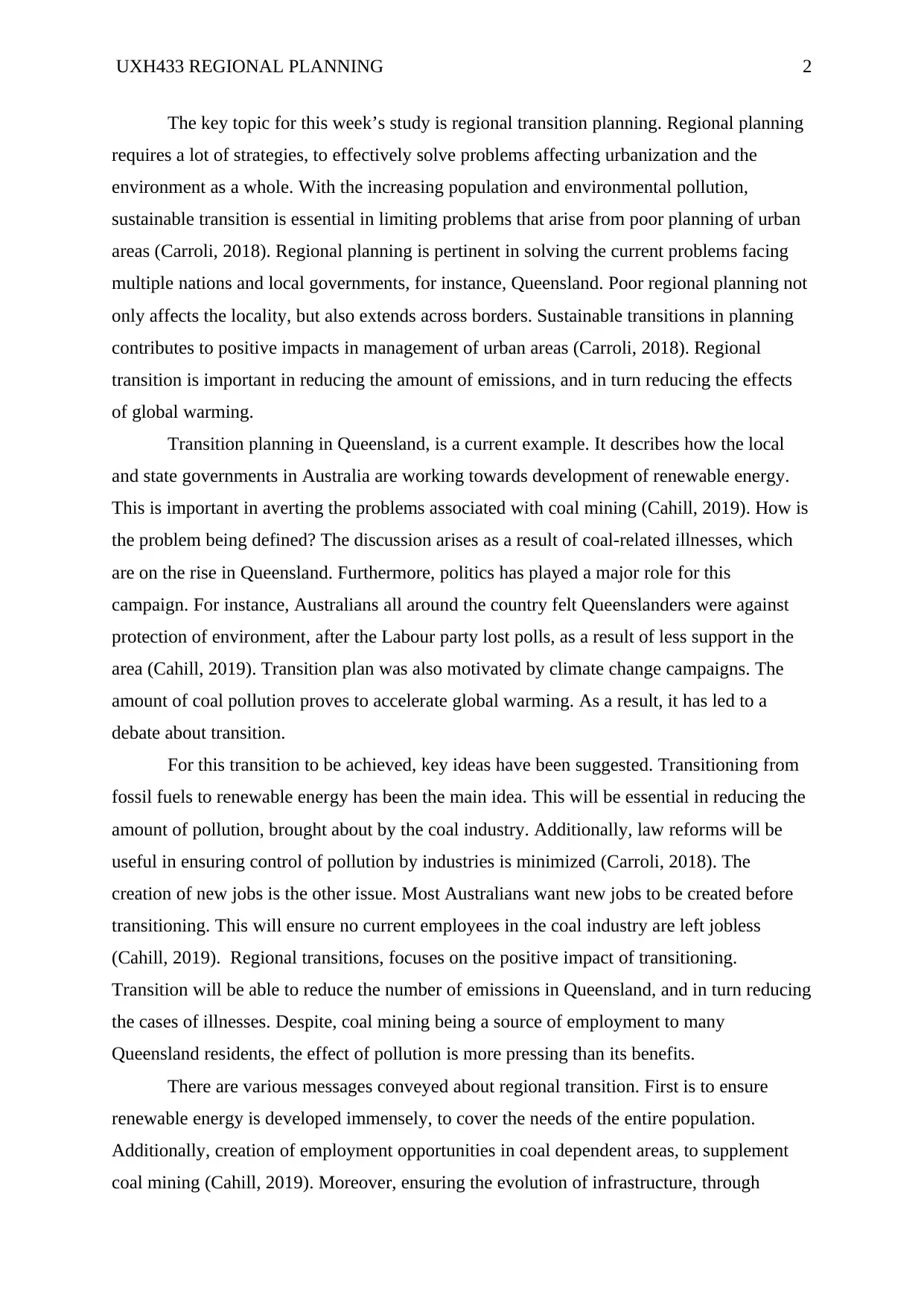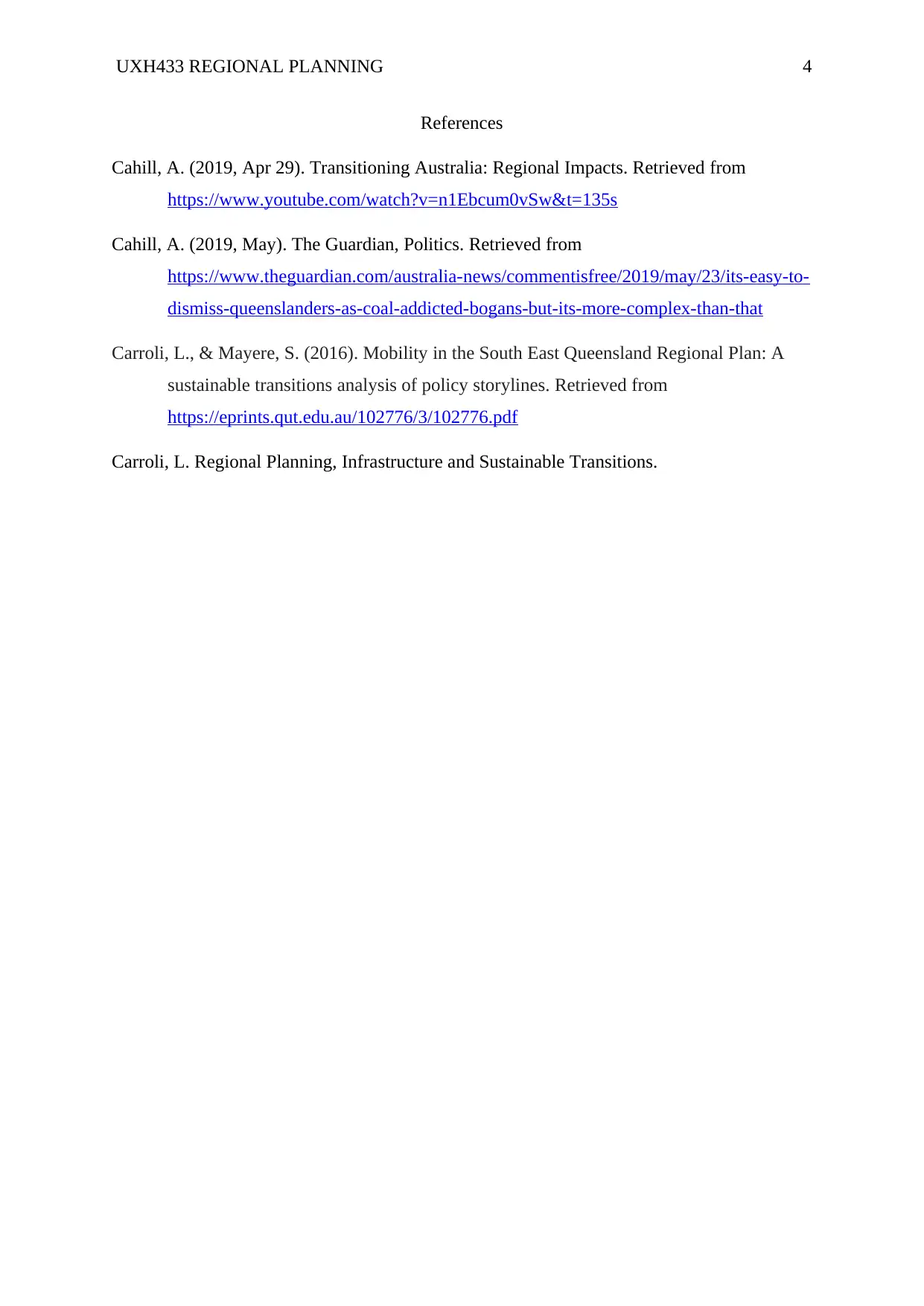Regional Transition Planning in Queensland: UXH433 Assignment Report
VerifiedAdded on 2022/10/04
|4
|706
|38
Report
AI Summary
This report, focusing on UXH433 Regional Planning, analyzes the critical topic of regional transition planning, particularly within the context of Queensland, Australia. It addresses the challenges of urbanization and environmental pollution, emphasizing the need for sustainable transitions. The report examines the shift from fossil fuels to renewable energy as a primary strategy to mitigate the adverse effects of coal mining, including related illnesses and global warming. It discusses the influence of political factors and climate change campaigns on the transition plan. Key ideas include the development of renewable energy sources, job creation in coal-dependent areas, and infrastructure evolution through education and technology. The report highlights the various messages conveyed about regional transition, such as the need for renewable energy development and the evolution of infrastructure. It also references the importance of considering both sides of the discussion before making permanent decisions about the transition, acknowledging the significance of coal mining for employment and the urgent need to address pollution effects. The report underscores the pivotal themes of transition and planning, emphasizing the need for sustainable practices in regional development.
1 out of 4











![[object Object]](/_next/static/media/star-bottom.7253800d.svg)